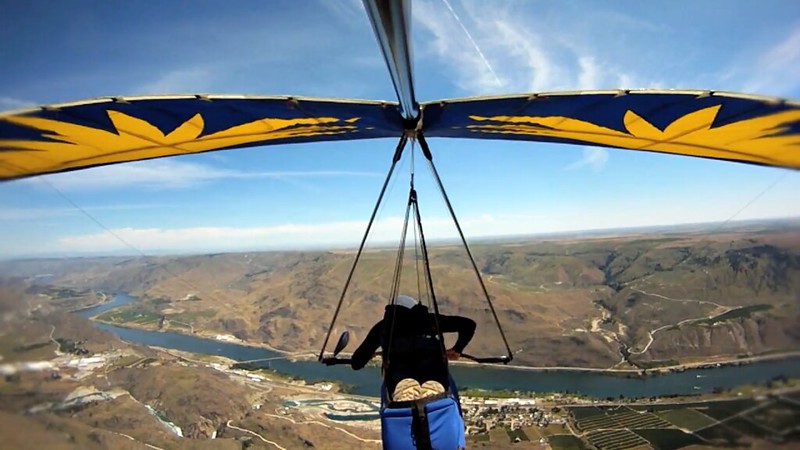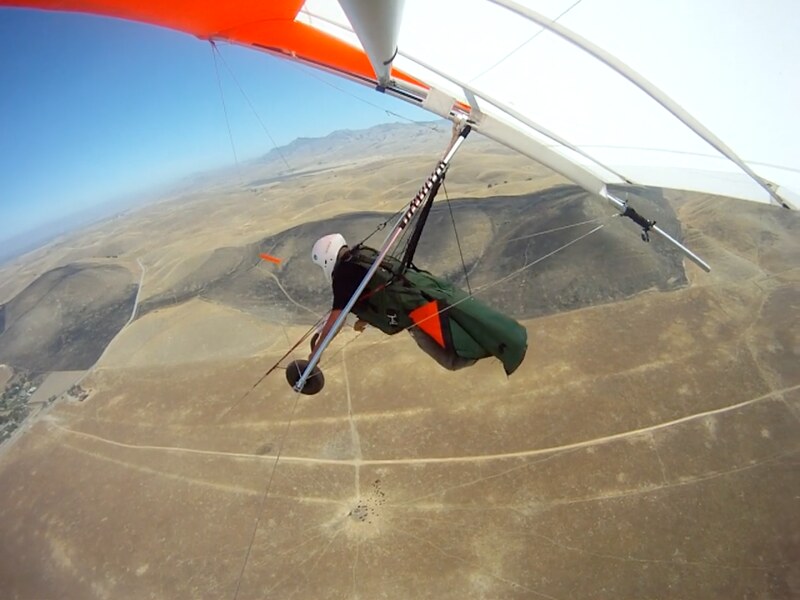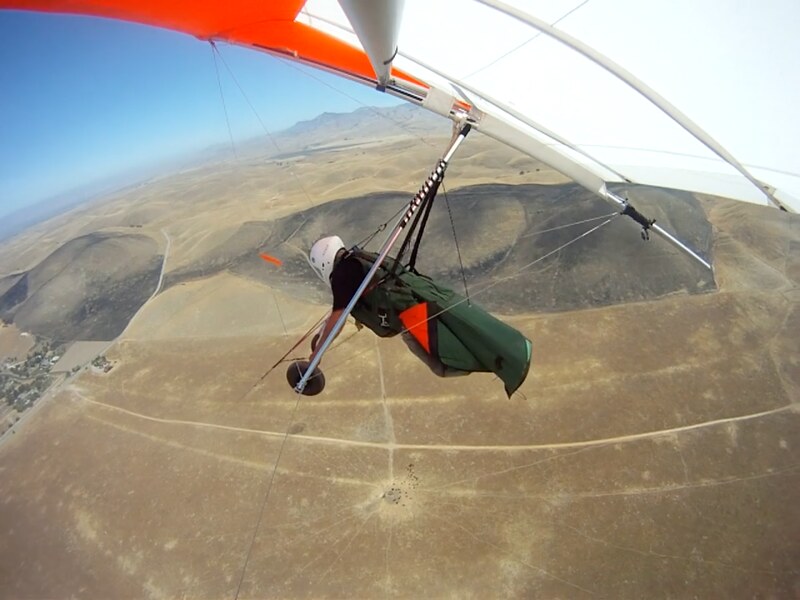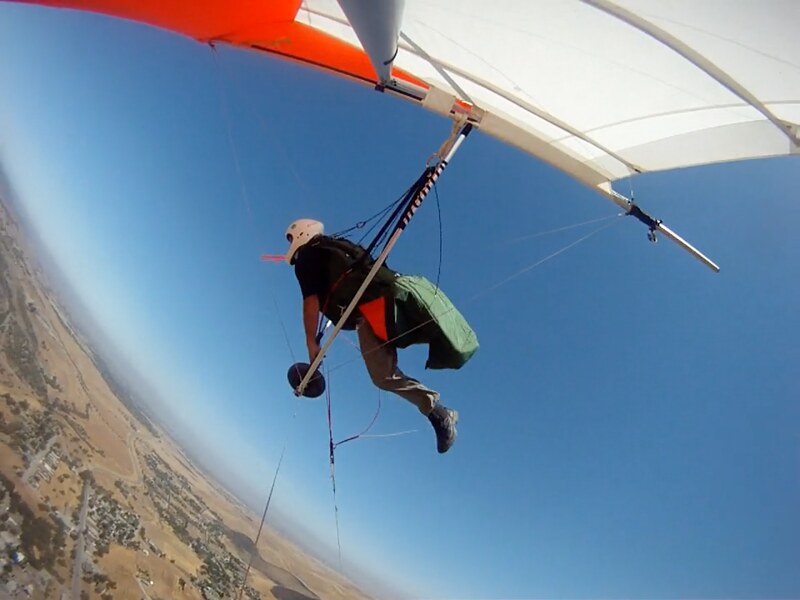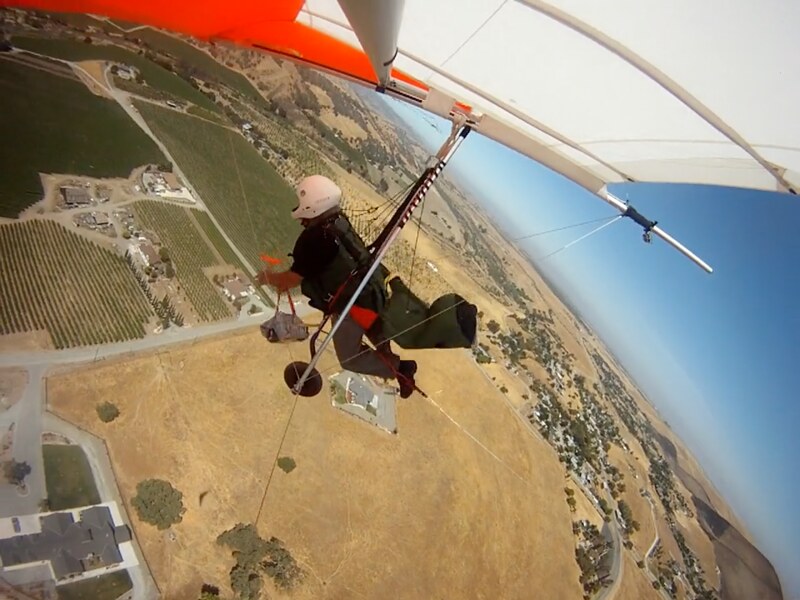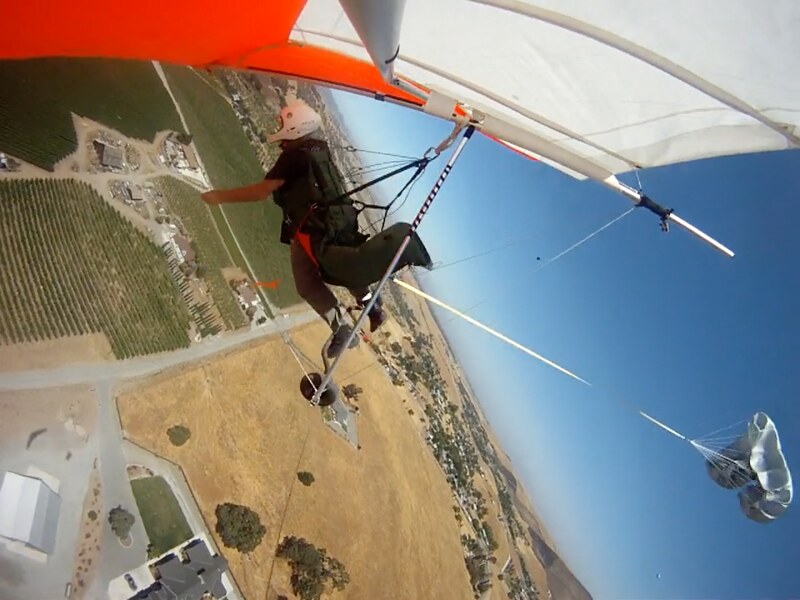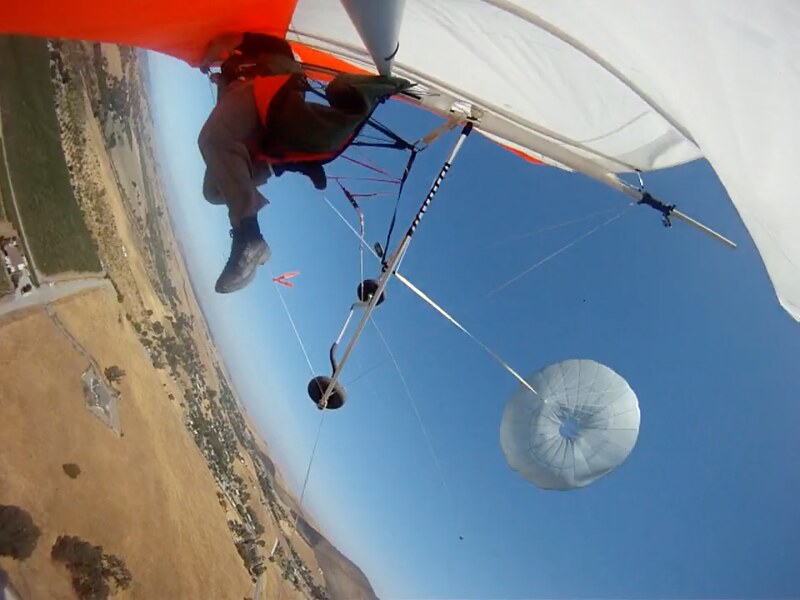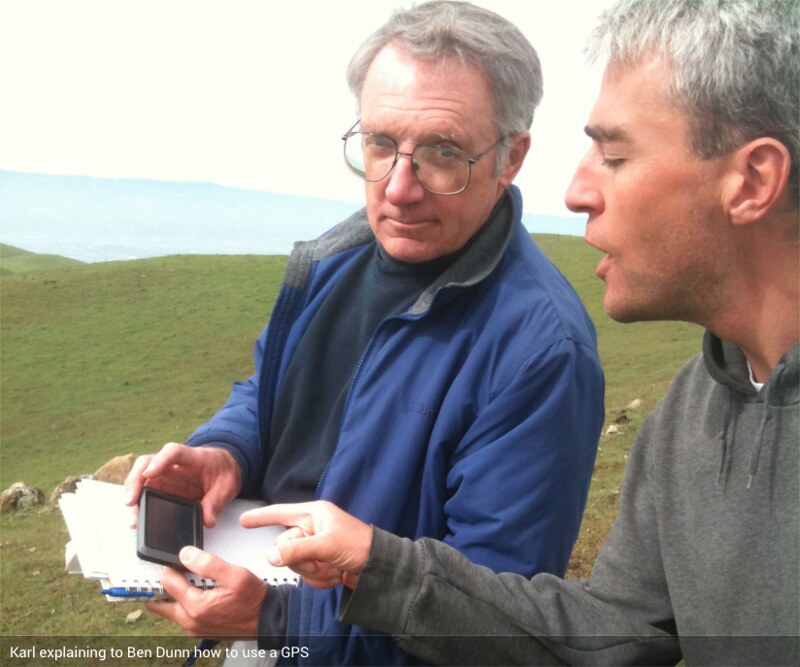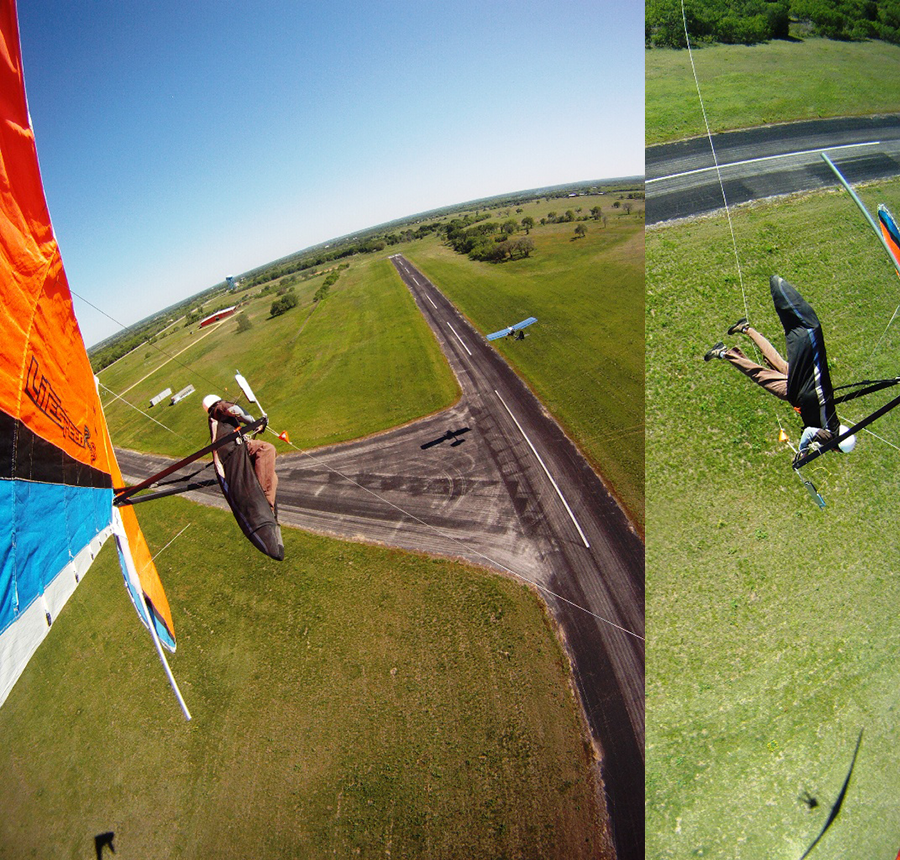http://ozreport.com/forum/viewtopic.php?t=47096
Aerotow primary releases?
Tom Lyon - 2016/04/01 20:15:37 UTC
I have a Falcon 4 -195 with the spinnaker release/bicycle handle set up and the extra hole drilled in the release as shown in the post by Hefalump with the big photo. I use a polypro bridle. I have a secondary barrel release on my harness. The entire set up and installation were provided to me by Tracy Tillman of Cloud 9. I am a member of the DFSC club.
I only have 20 solo aerotows...
Which means you've completed your tandem training, know how to stay in the Cone of Safety, recover from a weak link inconvenience / increase in the safety of the towing operation, handle any emergency situation Mother Nature and/or the total douchebag up front can throw at you.
...but am very happy with the system.
I see you have the same sterling AT equipment standards as...
http://ozreport.com/forum/viewtopic.php?t=24534
It's a wrap
Davis Straub - 2011/07/30 19:51:54 UTC
I'm very happy with the way Quest Air (Bobby Bailey designed) does it now.
http://ozreport.com/forum/viewtopic.php?t=24846
Is this a joke ?
Davis Straub - 2011/08/28 14:13:55 UTC
As I pointed out in a link in this thread. I was very happy to have a nice weak link when that happened to me at Marty's place near Rochester, NY.
http://ozreport.com/forum/viewtopic.php?t=30971
Zach Marzec
Davis Straub - 2013/02/09 16:45:39 UTC
I am more than happy to have a stronger weaklink and often fly with the string used for weaklinks used at Wallaby Ranch for tandem flights (orange string - 200 lbs). We used these with Russell Brown's (tug owner and pilot) approval at Zapata after we kept breaking weaklink in light conditions in morning flights.
http://ozreport.com/forum/viewtopic.php?t=31052
Poll on weaklinks
Davis Straub - 2013/03/06 18:29:05 UTC
I'm happy to have a relatively weak weaklink, and have never had a serious problem with the Greenspot 130, just an inconvenience now and then.
http://www.hanggliding.org/viewtopic.php?t=31747
Lockout
Davis Straub - 2014/09/01 15:22:41 UTC
I can tell you that I fly with a 200lb weaklink on one side of my 750lb pro tow bridle. I am happy with it.
...Davis Dead-On Straub. It's all about what one is HAPPY WITH. And what one is HAPPY WITH always seems to be a function of the way the political winds are blowing at any given moment - 180 degree shifts back and forth never seem to be significant issues.
I was nervous about aerotow release systems in general initially because I come from flying sailplanes where it's either the Tost or Schweizer release and they are very well-proven designs.
As was the standard aerotow weak link for decades. Looooong track record. Now everybody's busy proving the Tad-O-Link - a mere 54 percent more dangerous.
Get fucked, Jackie. Aviation equipment isn't PROVEN. It's ENGINEERED. The Schweizer release sucks under side loading and WILL lock up in dangerous situations. It works great when you don't really need it to - just like all the equipment and procedures in hang gliding. The Tost is bulletproof. Doesn't give a flying fuck what's going on with the planes. And it didn't need to be PROVEN because its DESIGNERS knew what the fuck they were doing and gave rat's asses.
The fact that there are different types of releases in hang gliding and different tow methods (e.g. pro-tow) was a bit disconcerting.
Doesn't u$hPa have release performance standards in its SOPs? How many of the "manufacturers" advertise that their equipment meets or exceeds them?
However, I am fully satisfied that the system I am using is reliable.
Big fuckin'...
http://www.ushpa.org/page/2016-spring-training
Spring Training
Spring Training
2016/03/22
Complacency and Denial
If I had to pick just one factor that was most common in our accidents/incidents, I would choose Complacency.
Mitch Shipley
USHPA Accident Reporting Committee Co-Chair (Hang Gliding)
http://www.ushpa.org/page/2016-spring-training
Spring Training
...surprise.
I don't know if it's as reliable as the sailplane releases I was familiar with or not, but there must be many hundreds of thousands of tows with this release system now.
And you carefully scrutinize all the incident reports published every month in the magazine to determine whether or not any of them are a bit problematic.
I asked Tracy why Cloud 9 prefers a polypro bridle and he said they have never had a single tangle of a bridle around a towline...
Meaning that he has them tangle on the tow RING left and right. NOBODY's ever figured out how to tangle a bridle on a towline before, idiot.
...and that made sense to me.
Implying that Trisa tells ya stuff all the freakin' time that DOESN'T make any sense to you.
Polypro is fairly large in diameter, and slippery.
So?
http://ozreport.com/9.098
The thin 1500 pound aerotow bridle
Davis Straub - 2005/05/03
Bob Lane said that Quest Air sold over 40 of their bridles (and Bob sold 15 or 20) during the Nationals. The Quest Air bridles use thicker Spectra and are designed not to whip around and accidentally tie themselves to the carabineer. Bob says his bridles will not do this either.
It is great to see these safer, simpler, and easy to use aerotow bridles becoming popular.
No bridle that anyone sells is capable of wrapping.
Tracy has the mounting spot on the keel figured out precisely for a Falcon, and he test flew the whole system for me.
Oh great. It's been figured out PRECISELY. How 'bout your hang point? Has that also been figured out PRECISELY. Power setting on the Dragonfly?
http://www.chgpa.org/forums/viewtopic.php?f=2&t=3661
Flying the 914 Dragonfly
Jim Rooney - 2008/12/06 20:01:49 UTC
You will only ever need full throttle for the first fifty feet of a tandem tow. Don't ever pull a solo at full throttle... they will not be able to climb with you. You can tow them at 28 mph and you'll still leave them in the dust... they just won't be able to climb with you... weaklinks will go left and right.
Weak link? A bit under four years ago Trisa figured out that it should be PRECISELY 130 pound Greenspot with the knot properly hidden for consistent breaking strength. No everyone and his fuckin' dog are happy with one PRECISELY...
http://ozreport.com/forum/viewtopic.php?t=47192
Retracing your bridle
 http://ozreport.com/20.063
http://ozreport.com/20.063
...54 percent more dangerous.
The balance is superb.
Nothing at all to do with how the tug is adjusting his power, airspeed, climb rate to keep you level. If he were towing a heavy tandem he'd be doing everything exactly the same.
Just the right amount of bar pressure, but very relaxed. I can focus on maintaining my position behind the tug, which is still somewhat-challenging for me if the air is really active.
Don't worry about it. Keep up the good work and you'll master it in no time.
I have the handle placement such that if I "chop" my hand over to it in an emergency without looking, I will be "guided" a bit by the basetube/upright junction and I'm certain that I'll actuate the release even if I am under duress.
Sure ya will. No fuckin' way you'll ever be in a situation in which you'll ever need every ounce of muscle you own applied continuously to keep from slamming in like in free flight launch and landing situations.
However, I actually release by looking at the handle and reaching over with my hand to depress the lever. I'm just saying that I feel confident that I could get the lever pushed in an emergency.
You've got way more confidence than I do, motherfucker...
Bill Bryden - 2000/02
Dennis Pagen informed me several years ago about an aerotow lockout that he experienced. One moment he was correcting a bit of alignment with the tug and the next moment he was nearly upside down. He was stunned at the rapidity. I have heard similar stories from two other aerotow pilots.
http://www.chgpa.org/forums/viewtopic.php?f=2&t=3391
More on Zapata and weak link
Paul Tjaden - 2008/07/22 04:32:22 UTC
I have never had a lockout situation happen so quickly and dramatically and had no chance to release as I have always thought I could do.
I've been in a lockout like those - at altitude - rigged with the best two point release on the planet. Finished up thirty feet lower than I started out. Good freakin' luck getting hit by something like that under fifteen.
Obviously, my own experience is extremely limited with just 20 tows.
- And I'd had a lot more than twenty tows under my belt.
- Obviously, you have no need of researching real world crash reports and or thinking through worst case scenarios.
But I feel that I researched this a carefully as I could...
Just a carefully as you've written this sentence. Yes Jackie, I have no doubt whatsoever that you're operating at max capacity.
...and that the experience of thousands of pilots before me using this system successfully makes me feel confident that I have a good release.
- The very same one that Trisa sold you! What a coincidence!
- And always look at the experience of the thousands of pilots before you using this system successfully and studiously ignore the scores who've used it stunningly UNsuccessfully.
I would not try to pro-tow my Falcon. Everyone I've talked to has told me that the bar pressure is very high and I think that would be dangerous (for me).
How 'bout a tandem aerotow instructor on a Moyes Xtralite?
06-03114
http://farm4.staticflickr.com/3728/9655895292_f4f808fb0e_o.png
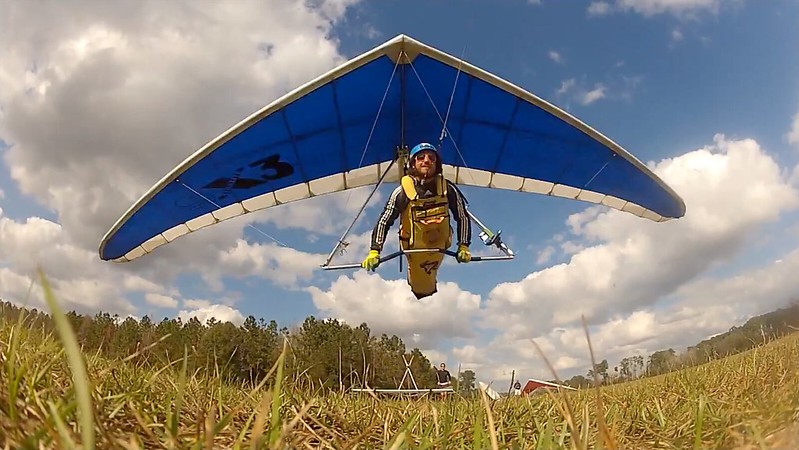
Would he be OK? Even your dickheaded tow operators have written in the magazine...
Dr. Trisa Tilletti - 2011/11
However, there is no upper tow point when pro-towing, so there is nothing but your body weight to hold down the nose of your glider while launching and towing. In that case, you should hold your weight farther forward than at best glide speed when lying prone in the cart just prior to launch, because your body needs to be farther forward while towing. In fact, vertical lockouts are all too common with pro-towing, because sometimes pilots cannot move far enough forward to keep the nose down. A vertical lockout is very dangerous for both the tug pilot and the hang glider pilot.
...that it's dangerous. Why do you need to "THINK" anything one way or another?
I also will not move up to towing with a Sport 2 or other glider until I probably have 100 hours or more on my Falcon.
What an asshole.
I'm a very conservative pilot.
So you keep telling us. I'd slash my fuckin' wrists if I were a "very conservative" "pilot" like you. REAL pilots are always pushing and advancing their limits, thinking about tight situations, training themselves to deal with them, having FUN.
I hope this is helpful to you.
Probably someone very much like you.
Matt Pruett - 2016/04/01 23:35:47 UTC
Cloud 9 is on my list of places to visit this summer, looking forward to it.
Trisa's really great people - and I have little doubt that you'll fit right in.
The fact that there are different types of releases in hang gliding and different tow methods (e.g. pro-tow) was a bit disconcerting.
That's pretty much what motivated me to start researching this, as well as some personal experiences and observations.
Like:
Matt Pruett - 2016/03/23 06:27:30 UTC
I spent quite a bit of time reading Tad Erickson's posts (probably spent a full day at it honestly), prior to making this thread. The only thing I have to say about all of that is this: ideas are cheap, talk is cheap. If someone thinks they can improve on the status quo, make a product with good documentation and sell it, get it into peoples hands, if it's a notable improvement then it will be adopted and/or influence other designs.
I don't have the expertise to build a towing system, nor do I have the flight experience to be a test pilot. Which is why I only listed products, made for the purpose, that actually exist in this thread.
I asked Tracy why Cloud 9 prefers a polypro bridle and he said they have never had a single tangle of a bridle around a towline, and that made sense to me. Polypro is fairly large in diameter, and slippery.
Hmm that's an interesting thought, what thickness do they use? Have a link to the material? What carabiner do they use at the end of the tow rope? Thanks.
Ever wonder why:
- Trisa uses:
-- a 250 foot Spectra towline but thinks it's a really cool idea to use polypro for the bridle - which is just a short extension of the towline?
-- Spectra for the FRONT END bridle?
- not one single other AT operation uses elastic bridles?
I wound up buying a linknife and the mouth release.
Great! An award winning hook knife in a tube that can be neutralized by a bit of wheat stubble and can't be used in an emergency and a one point release that can.
I'll probably put the linknife at the apex of the vbridle, it seems like a solid solution.
Yeah...
http://groups.yahoo.com/group/skysailingtowing/message/6726
Weaklinks
Peter Birren - 2008/10/27 23:41:49 UTC
You trying to tell me the pilot had time to release? Not a prayer.
I know about this type of accident because it happened to me, breaking 4 ribs and my larynx... and I was aerotowing using a dolly. The sh*t happened so fast there was no room for thought much less action. But I wasn't dragged because the weaklink did its job and broke immediately on impact.
Imagine if you will, just coming off the cart and center punching a thermal which takes you instantly straight up while the tug is still on the ground. Know what happens? VERY high towline forces and an over-the-top lockout. You'll have both hands on the basetube pulling it well past your knees but the glider doesn't come down and still the weaklink doesn't break (.8G). So you pull whatever release you have but the one hand still on the basetube isn't enough to hold the nose down and you pop up and over into an unplanned semi-loop. Been there, done that... at maybe 200 feet agl.
If only it actually WERE.
Haven't decided if I'm going to use the mouth release or not, but I love the concept.
Well, the really important thing is that T** at K*** S****** had no part in its development.
Matt Pruett - 2016/04/02 05:21:22 UTC
I have the handle placement such that if I "chop" my hand over to it...
That may be true for you, and it seems like a good idea to place the handle as you mention.
Within easy reach. Just like in the SOPs.
http://www.chgpa.org/forums/viewtopic.php?f=2&t=3648
Oh no! more on weak links
Carlos Weill - 2008/11/30 19:24:09 UTC
On June of 2008 during a fast tow, I noticed I was getting out of alignment, but I was able to come back to it. The second time it happen I saw the tug line 45 deg off to the left and was not able to align the glider again I tried to release but my body was off centered and could not reach the release. I kept trying and was close to 90 deg. All these happen very quickly, as anyone that has experienced a lock out would tell you. I heard a snap, and then just like the sound of a WWII plane just shut down hurdling to the ground, only the ball of fire was missing. The tug weak link broke off at 1000ft, in less than a second the glider was at 500ft. At that point I realized I had the rope, so I drop it in the parking lot.
Where better?
A point to consider is that in an actual emergency, you may find that you hesitate to open or move your hand because most new pilot's (this was certainly the case for me) will take longer than they should to become fully aware of the problem and also over-emphasize attempting to correct the situation by force rather than release.
Yeah. That's what's going on HERE:
Aerotow launch faliure
http://www.youtube.com/watch?v=bj-qBsETXPg
Oliver Chitty - 2014/03/02
dead
24 fps
01-001
http://c2.staticflickr.com/8/7375/12981378134_6d44d81e61_o.png
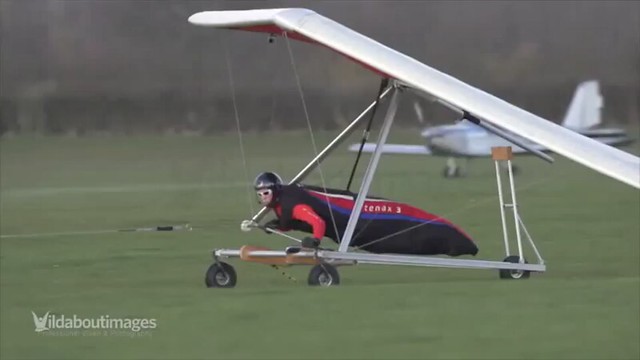
02-105
http://c2.staticflickr.com/2/1509/26063636822_359f51905f_o.png
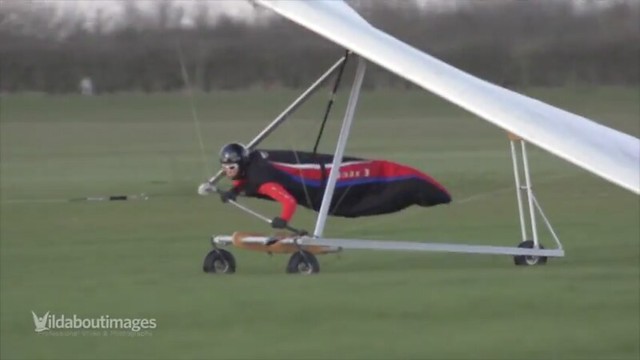
03-112
http://c2.staticflickr.com/2/1567/26089755611_811d4417b9_o.png
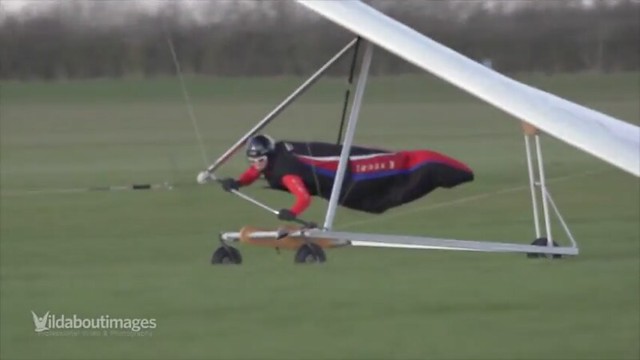
04-200
http://c2.staticflickr.com/4/3162/12980962685_5786637b33_o.png
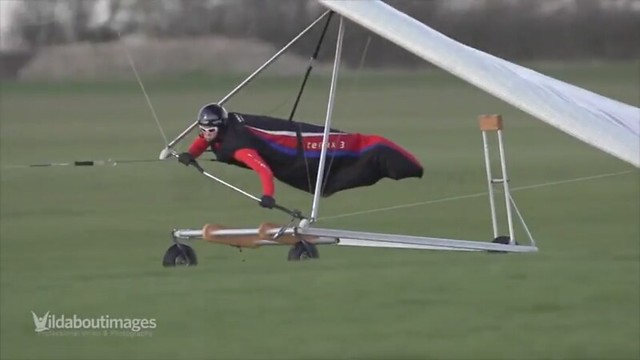
05-215
http://c2.staticflickr.com/8/7406/12980976575_d4a5b08283_o.png
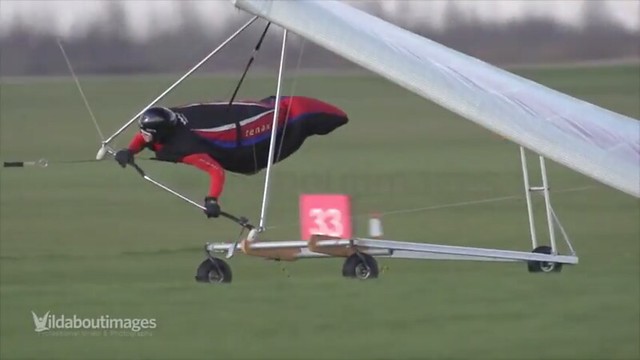
06-219
http://c2.staticflickr.com/2/1686/25553445153_1c39397346_o.png
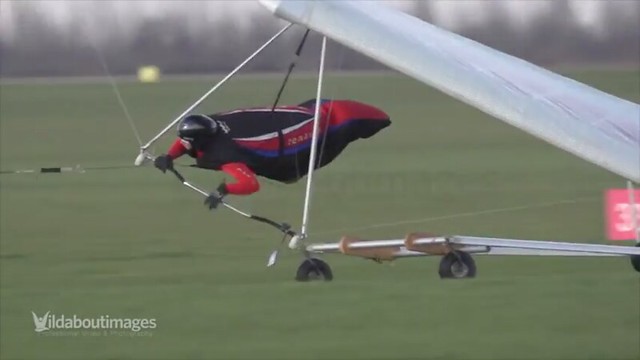
Ollie's hesitating to open or move his hand because most new pilots (this was certainly the case for you) will take longer than they should to become fully aware of the problem and are also over-emphasizing attempting to correct the situation by force rather than releasing. Hesitates 2.6 seconds from the beginning of the clip because thinks he can fix a bad thing and doesn't wanna start over.
07-300
http://c2.staticflickr.com/8/7441/12980980635_a22762812d_o.png
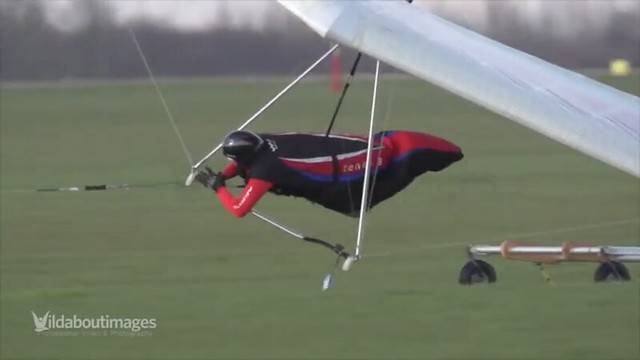
08-301
http://c2.staticflickr.com/4/3511/12981126873_947aa9cd84_o.png
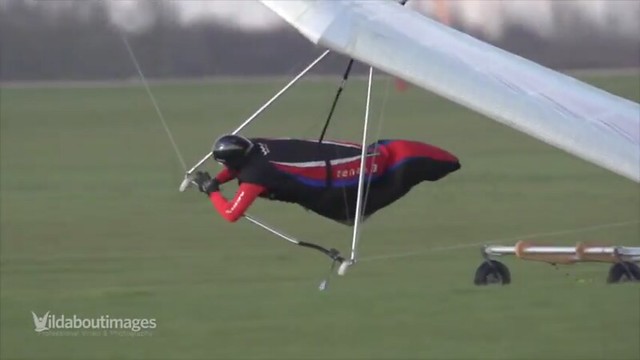
0.4 seconds from the beginning of the easy reach to be safely off tow, by the way.
09-304
http://c2.staticflickr.com/4/3273/12981128393_1dfccdbb68_o.png
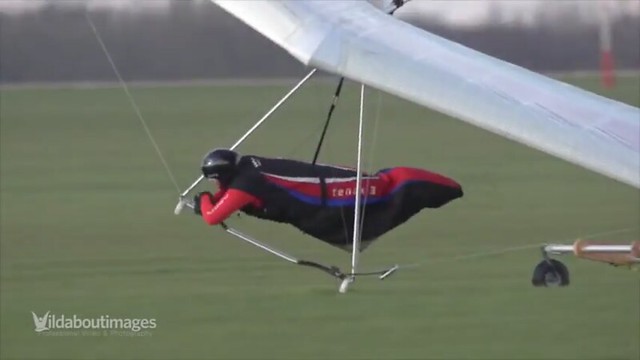
10-307
http://c2.staticflickr.com/2/1660/26132155836_82b94d6550_o.png
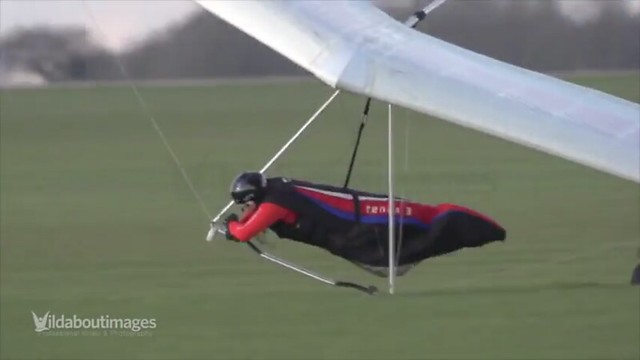
Makes no attempt whatsoever to either fly out of the situation or use his glider as a crush zone.
11-311
http://c1.staticflickr.com/3/2550/12981131483_dde259c80d_o.png

12-314
http://c2.staticflickr.com/2/1534/26156092785_a74b7428ff_o.png
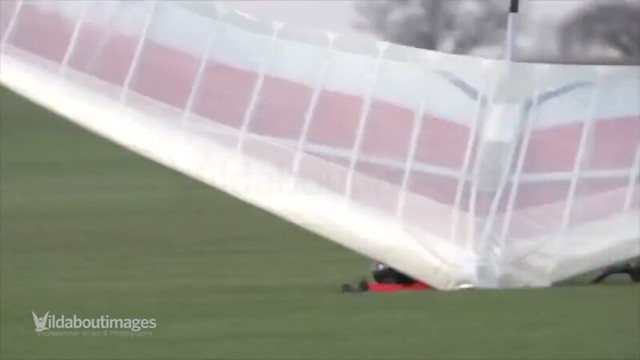
13-324
http://c2.staticflickr.com/2/1705/26063634502_15c1fddc1b_o.png
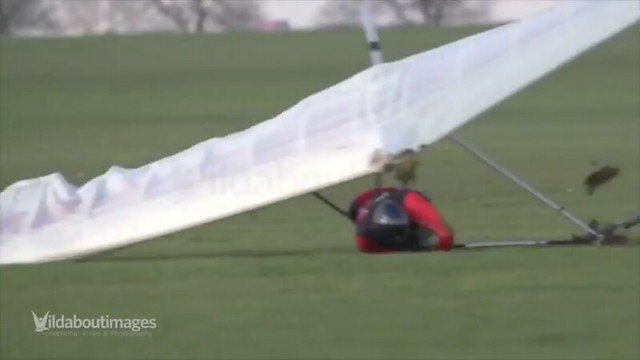
14-409
http://c2.staticflickr.com/2/1558/25883200930_a1414657a9_o.png
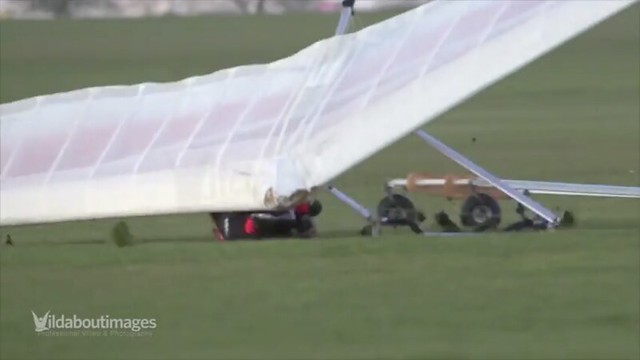
15-413
http://c2.staticflickr.com/4/3141/12981414774_e6ddd85c13_o.png
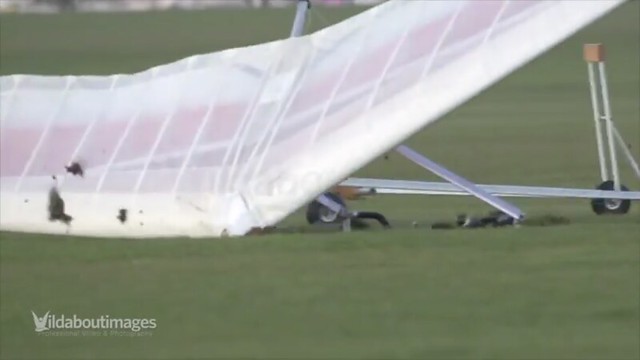
16-615
http://c2.staticflickr.com/2/1643/26089752561_aa0c21b900_o.png
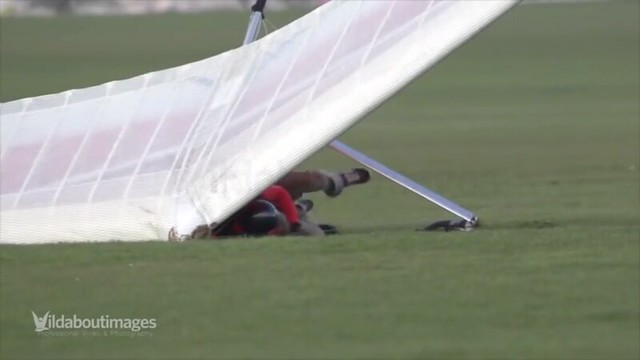
17-914
http://c2.staticflickr.com/2/1621/25553442623_0fa04a2bdb_o.png
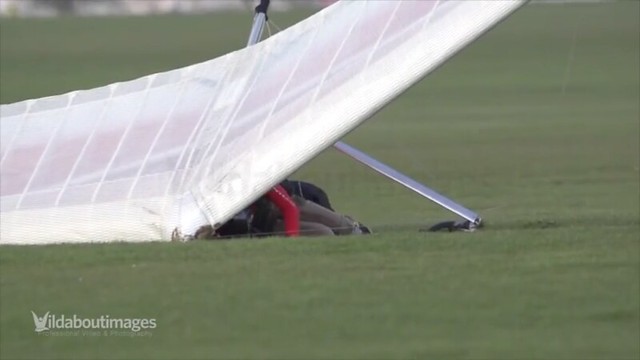
And he ends up having to start over anyway. What a moron.
Everyone that watches a lockout video knows what the pilot should be doing and when, but actually being in the situation and responding quickly is not the same thing.
That's undoubtedly why Davis Dead-On Straub...
 http://ozreport.com/pub/images/fingerlakesaccident2.jpg
http://ozreport.com/pub/images/fingerlakesaccident3.jpg
http://ozreport.com/pub/images/fingerlakesaccident2.jpg
http://ozreport.com/pub/images/fingerlakesaccident3.jpg

...fails to go for either of his easily reachable releases while the cart wheels are severely castering and he's about to get dragged off the cart.
In an extreme lockout that stationary leaver may feel very far away.
In ANY emergency that stationary leaver might as well have left for the fuckin' moon. How many crashes do we need to see and hear about before that point sinks in?
I would recommend...
Oh good. US hang gliding's next Jim Keen-Intellect Rooney.
...any pilot to load up their release with lots of weight, and pull the release a number of times from the flying position if possible, it's not usually going to be hard to pull, but with many of these releases it will be different than what you are accustomed to, feeling that difference a number of times I think is probably valuable.
- Which is another way of saying that none of the individual manufacturers have done this.
- Funny nobody ever makes recommendations like this for bicycle handbrakes - or Tost or Schweizer sailplane releases.
- Maybe he should also go up and practice hitting the lever in free flight when he's getting blasted on his ear by a thermal to see how the glider responds. My guess is that it'll tend to level out and resume heading - but it would be good to know for sure.
Gawd it's nice hearing you and Christopher talking and affirming my decisions to ban your douchebag asses.
Tom Lyon - 2016/04/02 11:44:19 UTC
Thanks for the advice on pulling the release when it is under a heavy load. I will consider that.
Or you could just save yourself the trouble and read what the alleged coauthor of the excellent book, Towing Aloft, by Dennis Pagen and Bill Bryden had to say about the Quallaby release a dozen years ago yesterday...
http://groups.yahoo.com/group/skysailingtowing/message/4049
Towing errata
Bill Bryden - 2004/04/01 16:20:18 UTC
Some aerotow releases, including a few models from prominent schools, have had problems releasing under high tensions. You must VERIFY through tests that a release will work for the tensions that could possibly be encountered. You better figure at least three hundred pounds to be modestly confident.
Maybe eight to ten years ago I got several comments from people saying a popular aerotow release (with a bicycle type brake lever) would fail to release at higher tensions. I called and talked to the producer sharing the people's experiences and concerns. I inquired to what tension their releases were tested but he refused to say, just aggressively stated they never had any problems with their releases, they were fine, goodbye, click. Another person tested one and found it started getting really hard to actuate in the range of only eighty to a hundred pounds as I vaguely recall. I noticed they did modify their design but I don't know if they ever really did any engineering tests on it. You should test the release yourself or have someone you trust do it. There is only one aerotow release manufacturer whose product I'd have reasonable confidence in without verifying it myself, the Wallaby release is not it.
And the "design" "modification" Bill is talking about was this:
http://www.flickr.com/photos/aerotowrelease/8305428629/

to:
http://c2.staticflickr.com/2/1523/25679752020_89cc46e0e3_o.jpg
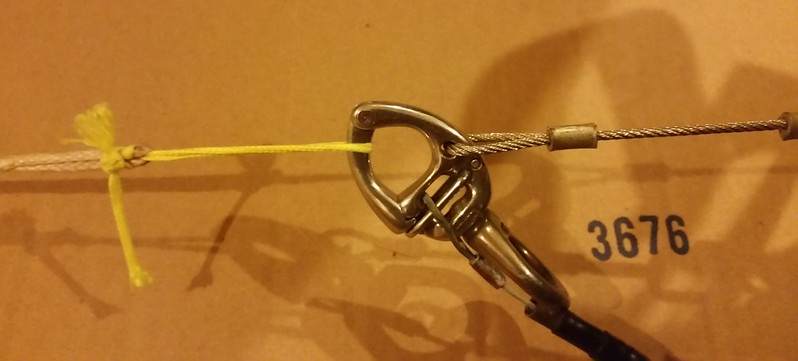
And this ABSOLUTE MORON...
Towing Aloft - 1998/01
Bill Bryden became enamored with the sport of hang gliding in 1976 while residing in Hawaii and managing a bicycle shop. However he shortly thereafter moved to Illinois to pursue higher education and believed his hang gliding dream impossible in the flat lands. Bill completed an engineering degree and master's degree in business at the University of Illinois then moved to Indiana.
http://groups.yahoo.com/group/skysailingtowing/message/6120
Bridles and Releases
Tad Eareckson - 2007/01/04 05:35:32 UTC
If my designs are better (and they are - I've done my homework) say so and adapt them.
Bill Bryden - 2007/01/05 16:52:14 UTC
How did your design fair in a Failure Mode and Effects Analysis (FMEA) and in Failure Mode and Effects Testing (FMET)? What were the results of performance tests like those in the Appendix III of Towing Aloft?
What were the sample sizes of repeated tests and number of product samples (ie were they statistically significant)?
Just a little aside observation: I have supervised many projects and engineers over the years. Oddly, there often is a correlation between the robustness of a design and the engineer's humbleness regarding it. Others also have a sense of that relationship and it affects our thinking, makes us wary.
Have fun.
Bill
Tad Eareckson - 2007/01/06 00:36:14 UTC
Hi, Bill, thanks for half of the book.
Regarding the FMEA/FMET - I don't have a clue what those are. When this headache starts going away maybe I'll google those terms and give it a boost.
The sample sizes for the tests I've done were, in all cases, One (1).
Yeah, I've transcribed Appendix III to my disk, taken some ideas, and substituted others.
Does the stuff you're flying with have all those stamps of approval? Does anybody's anywhere?
(No reply. Big surprise.)
...can't figure out what the performance effect of the modification was. Maybe enhanced it, maybe degraded it, maybe had no bearing whatsoever. Who can really tell for sure without Failure Mode and Effects Analysis (FMEA) and Failure Mode and Effects Testing (FMET)?
Fortunately, my 100+ sailplane aerotows help me to the extent that I am acutely aware when I'm out of position.
How many spot landing attempts did you hafta do before you became acutely aware of the distances by which you were missing the old Frisbee in the middle of the LZ? How fucking stupid do you need to be to not be acutely aware of being out of position on an aerotow - what with the really excellent feedback a roll unstable system is constantly sending you?
I also have noticed from lockout videos that there is often a period of time when the problem is worsening, but the pilot appears to be unaware.
Yeah, the pilot APPEARS to be unaware. Probably has something more important on his mind and isn't really paying attention to what he's doing.
Bullshit Jackie. There are only two reasons people get out of position and lock out on tow:
- don't know how to fly a glider as a consequence of shit instruction and forced upright "training"
- get hit by something that overpowers their available control authority
NOBODY is EVER unaware of what's going on during an aerotow and if Davis hadn't all but totally eradicated all vestiges of intelligent life from his dump you'd currently be getting a new asshole ripped.
Davis Straub - 2016/04/02 13:00:03 UTC
Mouth release.
Rubber duck.
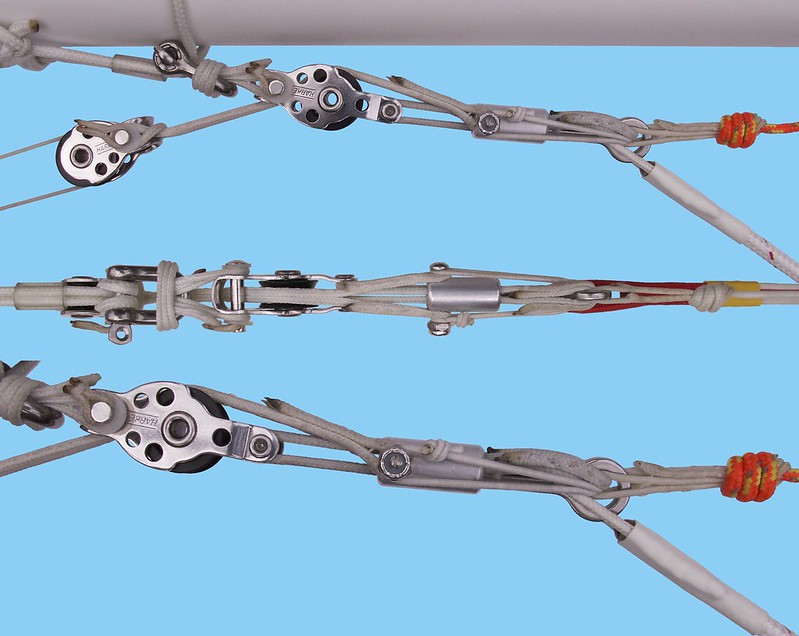
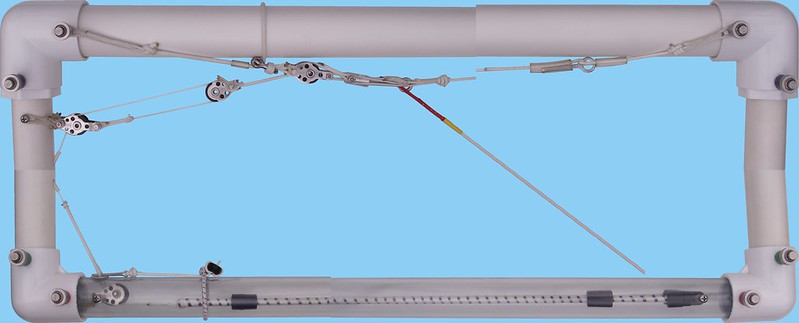


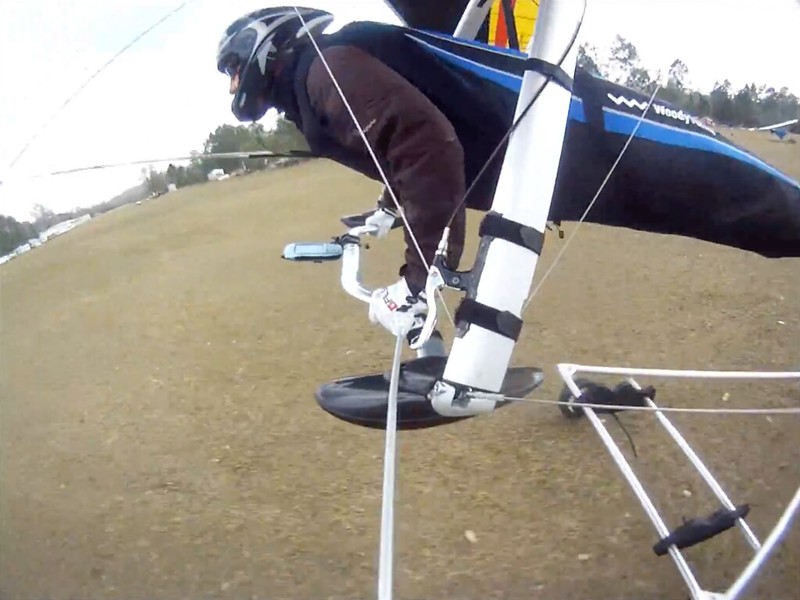
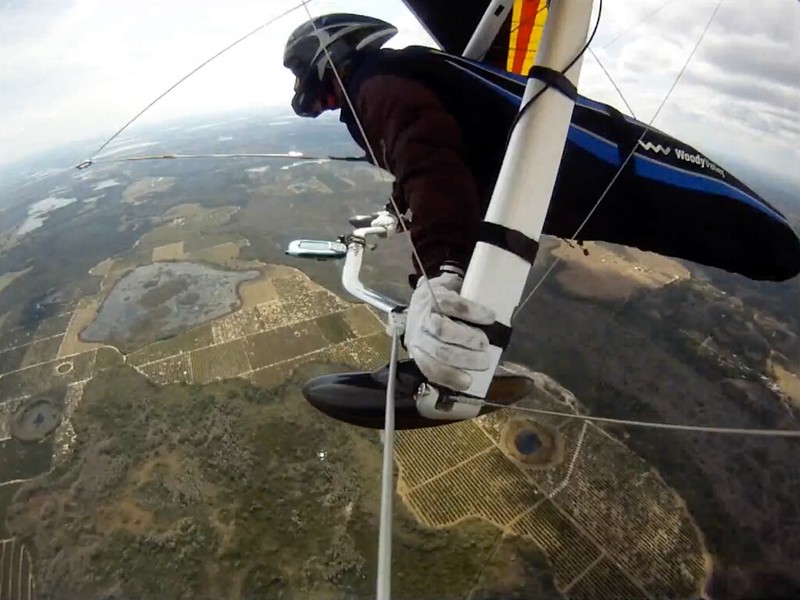
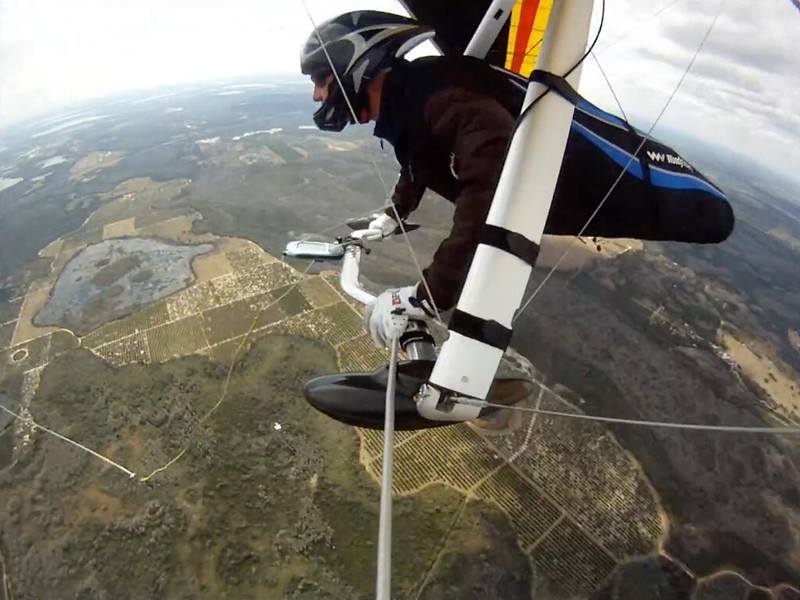
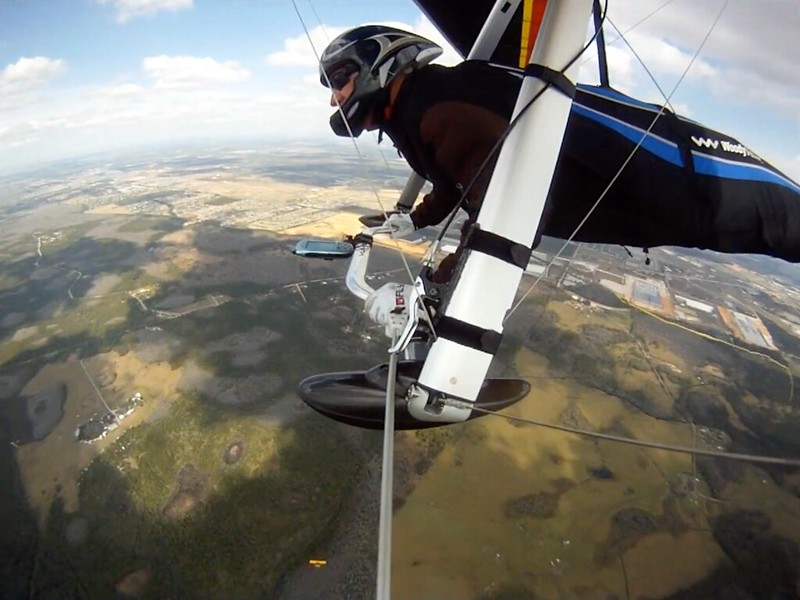
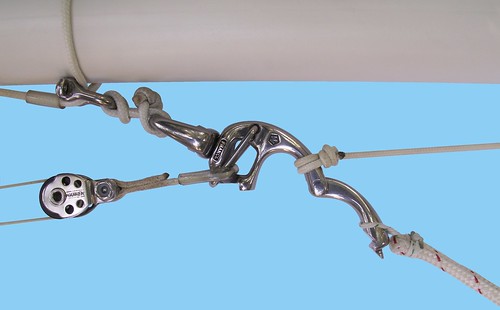
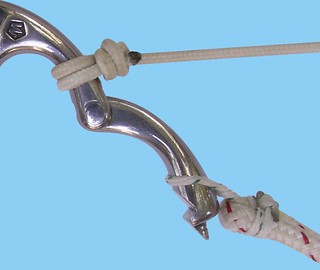





 So what gives??? What do you want us to tell you? Your concerns echo Tad's concerns, so why not use his system? Every other system out there has known flaws.
So what gives??? What do you want us to tell you? Your concerns echo Tad's concerns, so why not use his system? Every other system out there has known flaws.
